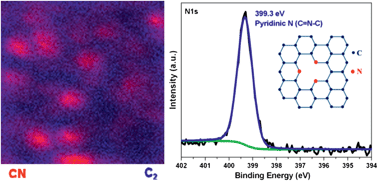Pyridinic N doped graphene: synthesis, electronic structure, and electrocatalytic property†
Abstract
Different C–N bonding configurations in

* Corresponding authors
a
Division of Physics and Applied Physics, School of Physical and Mathematical Sciences, Nanyang Technological University, Singapore
E-mail:
Yuting@ntu.edu.sg
b
Applied Catalysis, Institute of Chemical and Engineering Sciences, Singapore
E-mail:
lin_jianyi@ices.a-star.edu.sg
c WinTech Nano-Technology Services Pte. Ltd, Singapore
d Department of Physics, Faculty of Science, National University of Singapore, Singapore
Different C–N bonding configurations in

 Please wait while we load your content...
Something went wrong. Try again?
Please wait while we load your content...
Something went wrong. Try again?
Z. Luo, S. Lim, Z. Tian, J. Shang, L. Lai, B. MacDonald, C. Fu, Z. Shen, T. Yu and J. Lin, J. Mater. Chem., 2011, 21, 8038 DOI: 10.1039/C1JM10845J
To request permission to reproduce material from this article, please go to the Copyright Clearance Center request page.
If you are an author contributing to an RSC publication, you do not need to request permission provided correct acknowledgement is given.
If you are the author of this article, you do not need to request permission to reproduce figures and diagrams provided correct acknowledgement is given. If you want to reproduce the whole article in a third-party publication (excluding your thesis/dissertation for which permission is not required) please go to the Copyright Clearance Center request page.
Read more about how to correctly acknowledge RSC content.
 Fetching data from CrossRef.
Fetching data from CrossRef.
This may take some time to load.
Loading related content
